From Japan, we were headed deep into the heart of Borneo: one adventure to a remote jungle in Sabah province, and another to the eastern coast which would bring us deeper underwater than we’ve ever been.
As we flew in to the third largest island in the world, we looked down upon a vast sea of oil palm plantations. One of Malaysia’s biggest exports is palm oil, and unfortunately much of the native environment has been clear-cut to make way for its production; in the past 40 years, more than 25% of Borneo’s land surface has been transformed from forest to agriculture. (Photo courtesy World Wildlife Fund.)
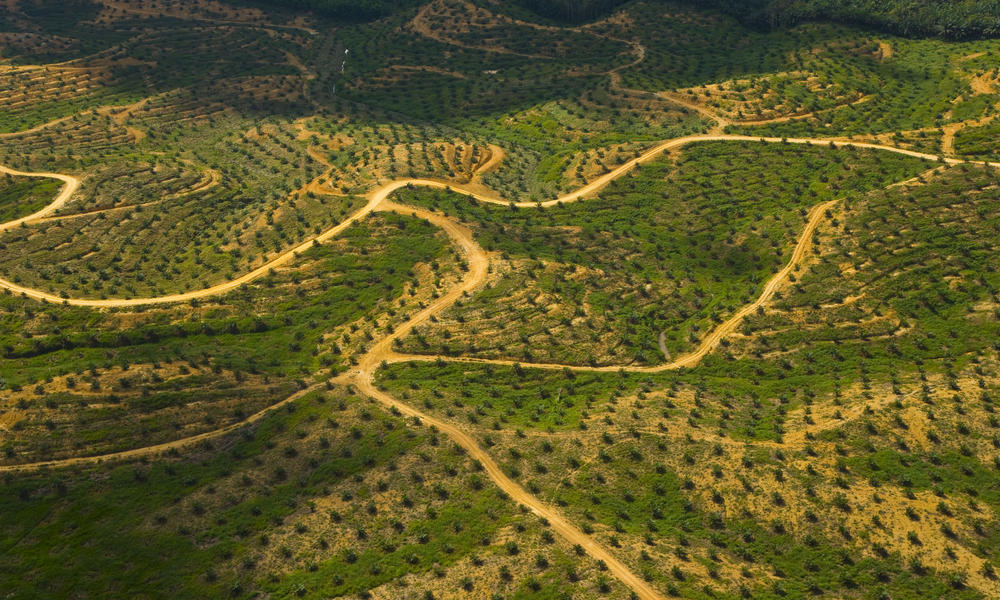
We had booked an Airbnb in an apartment complex above the giant new IMAGO mall (tag-line: “whatever your soul craves”) in Kota Kinabalu and we spent our first hour in the pouring rain looking for “Loft D”, the entrance to our apartment. We finally found it up a parking ramp above the dumpsters, and checked into the modern apartment, which was reasonably nice aside from the construction noise and this “welcome” sign.
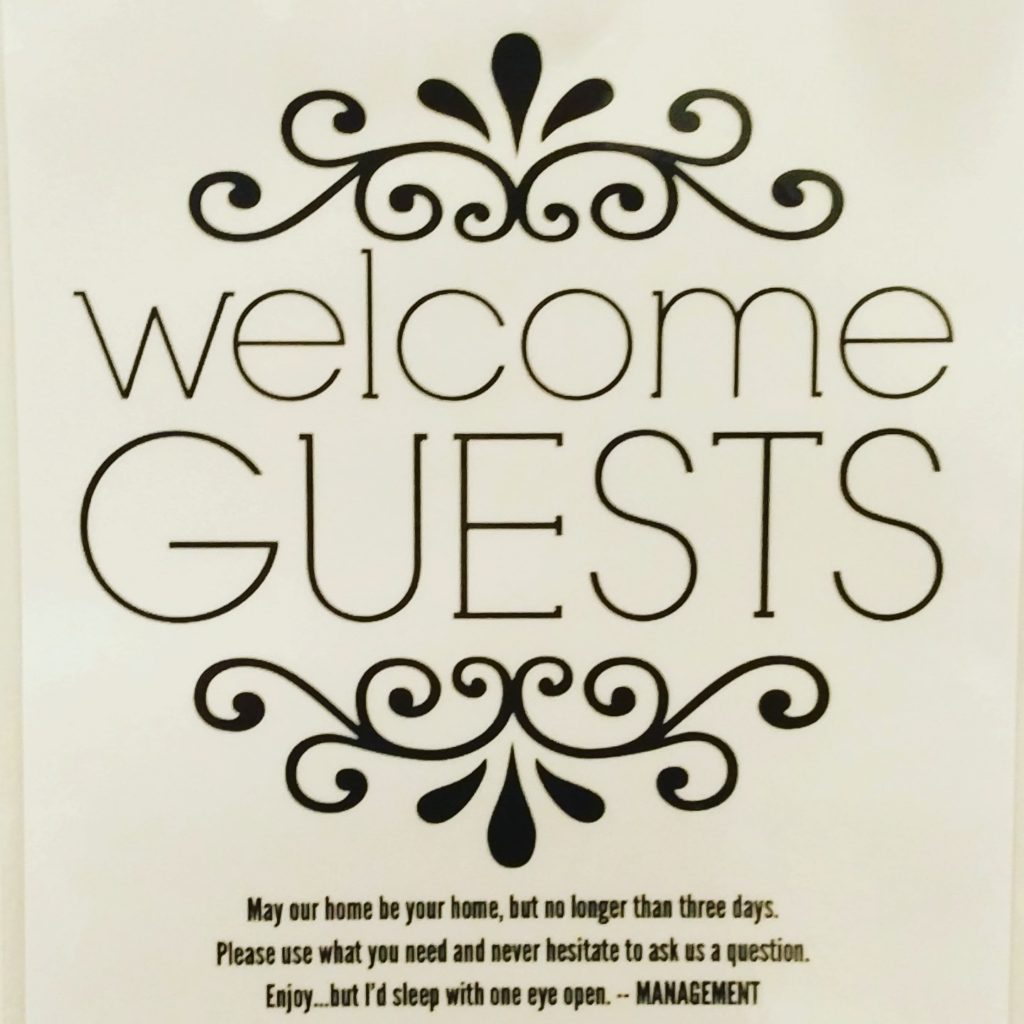
We had booked for five nights, and weren’t sure quite what to think…
We did some exploring, and found that Kota Kinabalu (or at least the area where we were staying) consisted mostly of malls, some modern and others dingy and cramped, with little pedestrian infrastructure connecting them. So, we spent most of our five days in the apartment or the mall food court below, catching up on work and planning the rest of our time in Borneo.
Highlights of Kota Kinabalu included this multi-cultural dance ceremony in one of the mall’s hallways – there were Malay, Chinese, Indian, and Irish dancers performing in front of a backdrop of the Gap and Bath and Body Works:

We were also amused by the “forbidden” section of the grocery store, which consolidated various delicious items like bacon and wine that are off-limits to most in this Muslim-majority country.

Our first real stop in Borneo was Sandakan, where we got a ride directly from the airport to the Labuk Bay Proboscis Monkey sanctuary.
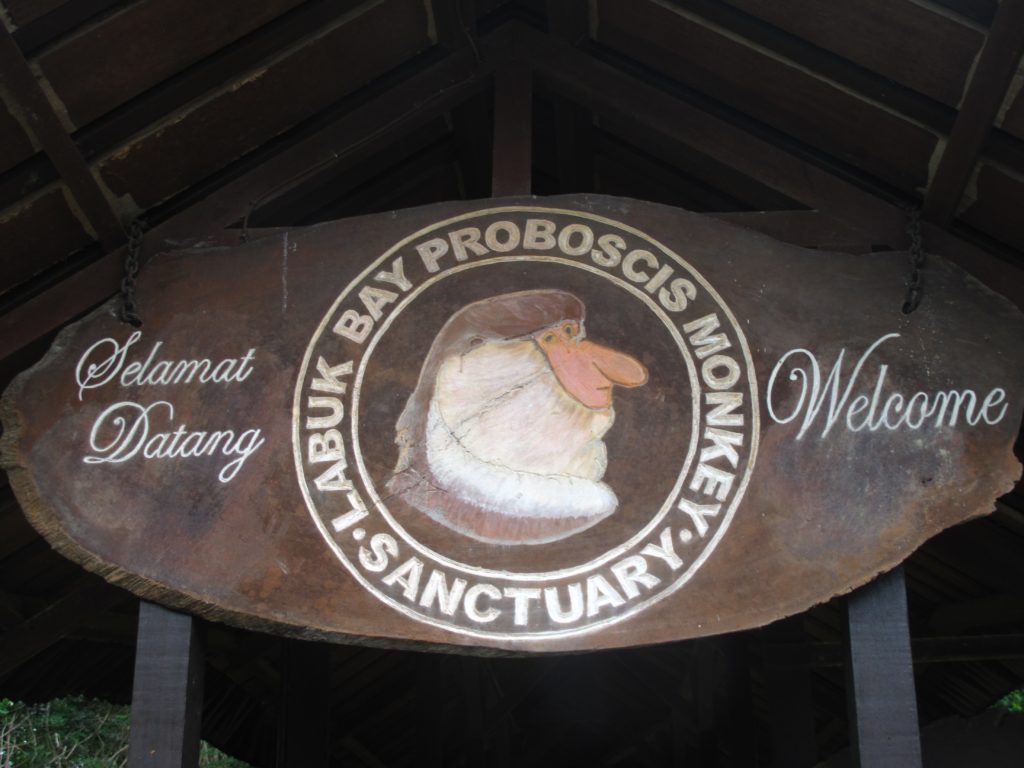
In case it’s not obvious, proboscis is the Latin word for nose.
While we waited for feeding time, we watched a rather entertaining video about the monkeys, in which the protagonist bachelor monkey snuck several trysts with the “wives” of the alpha male before ultimately taking control of the group himself. This crescendo coincided with the other protagonists, two (human) brothers who were decimating the monkeys’ habitat to create palm plantations, having a change of heart and designating this last sliver of land as the Labuk Sanctuary.
When we emerged from the theater, a troop of silvered leaf monkeys were hanging around the viewing deck.
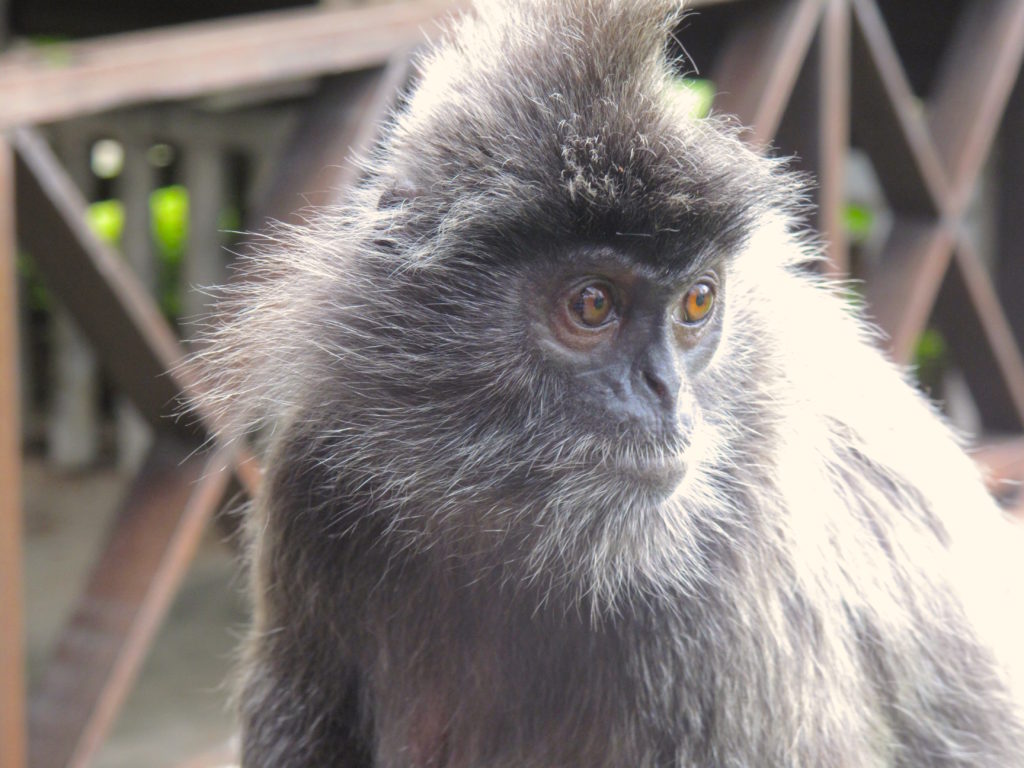
They were pretty adorable and docile; this one kept reaching out to hold the hand of one of the sanctuary workers.
As feeding time approached, groups of proboscis monkeys swung down from the trees and started staking out the various feeding platforms.
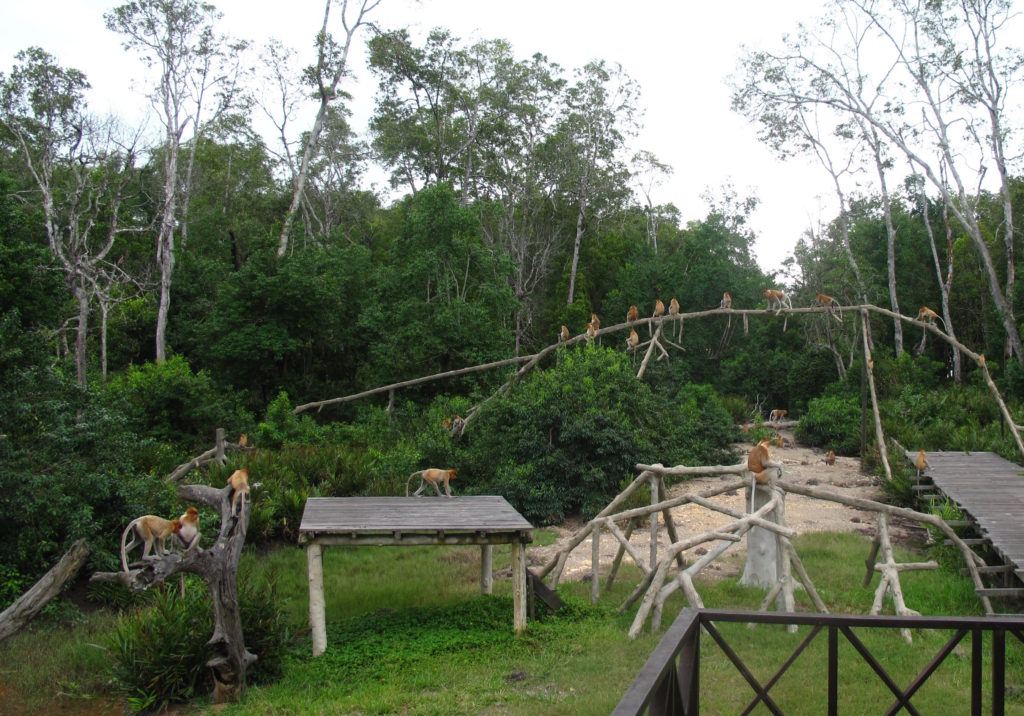
After watching them gorge themselves, Jason saw this female making the “kissy face” gesture we had seen several times in the film:

at this nearby male whose nose had clearly impressed her.
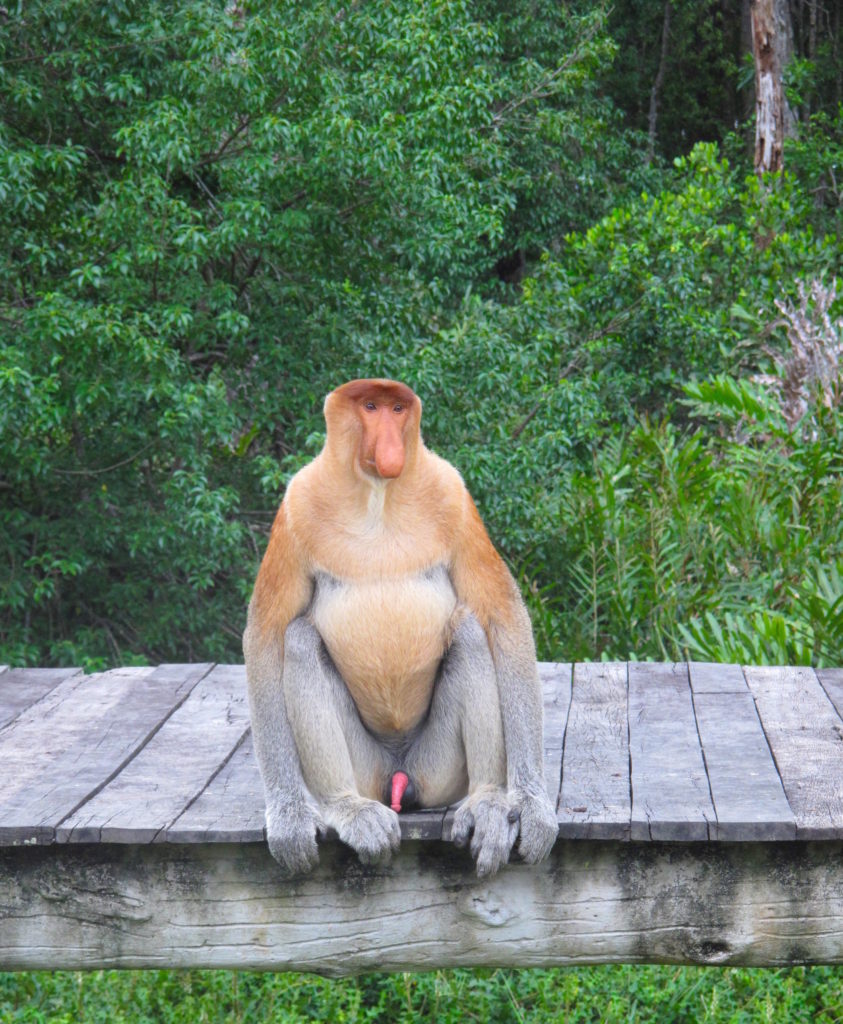
A few seconds later, nature ran its course right on the pier in front of us, and her alpha male seemed to be none the wiser.
After a quiet night listening to the ladies in the room next-door fight through a severe case of food poisoning or stomach flu (both of which Sarah has a deep-seated phobia of), we made a quick pit stop to see the orang utans at the nearby Sepilok Rehabilitation Center. (Orang utan is a Malay phrase meaning ‘human of the forest’.)
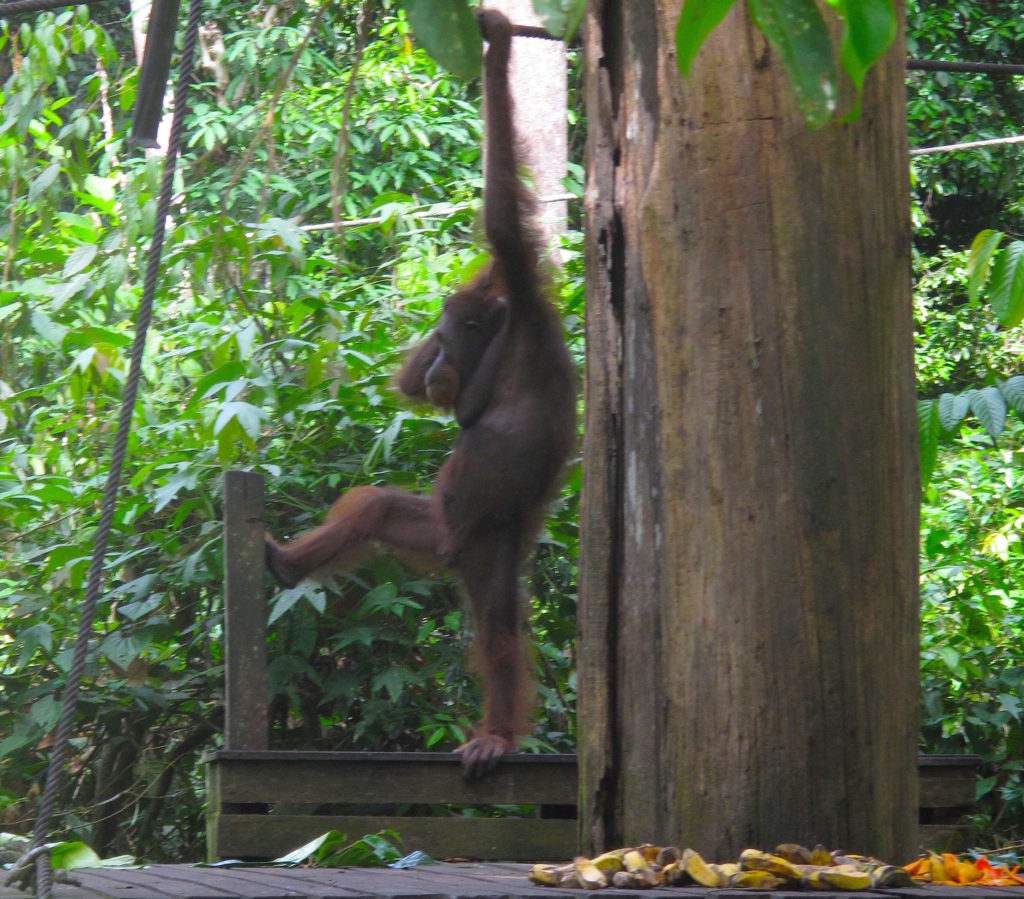
Only two orang utans showed up to eat the fruit the staff laid out, which the placards proclaimed was a good thing. The goal of the center is to rehabilitate orangutans, which tend to be solitary in nature; if only a few out of hundreds in the area bothered to come for the free food, that probably means they’re doing fine without any further help.
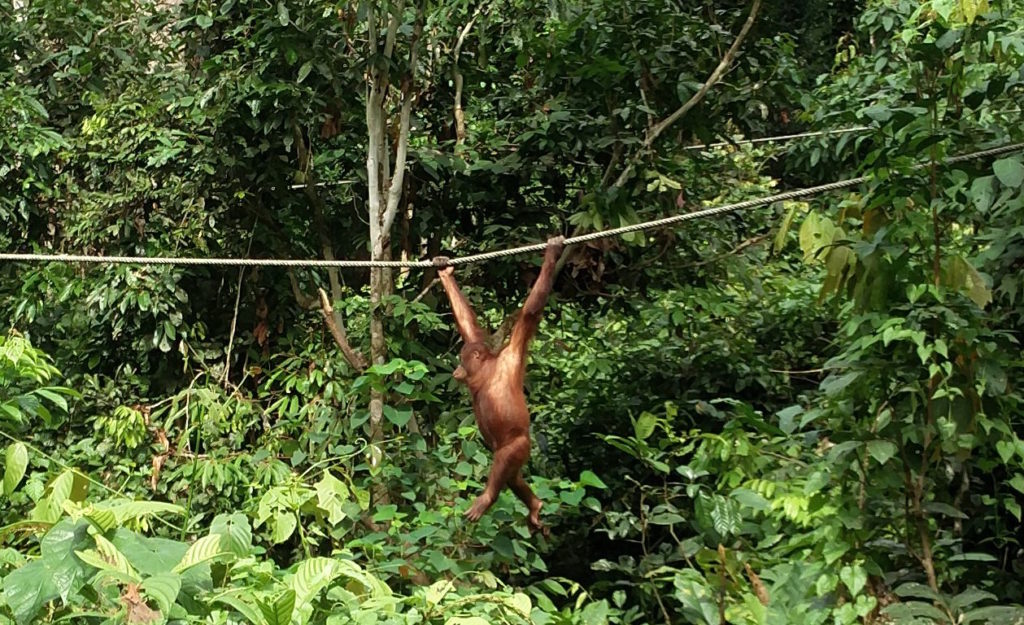
Wild orang utans are only found in the rainforests of Borneo and Sumatra, and largely due to habitat destruction from palm oil and other agriculture, they may become extinct in the wild in just 25 years
While waiting for our ride to the jungle, we also figured we might as well check out the neighboring sun bear sanctuary, featuring a number of adorably tiny bears devouring coconuts. Sun bears are the smallest bears in the world and are named after the light-colored patch on their chests.
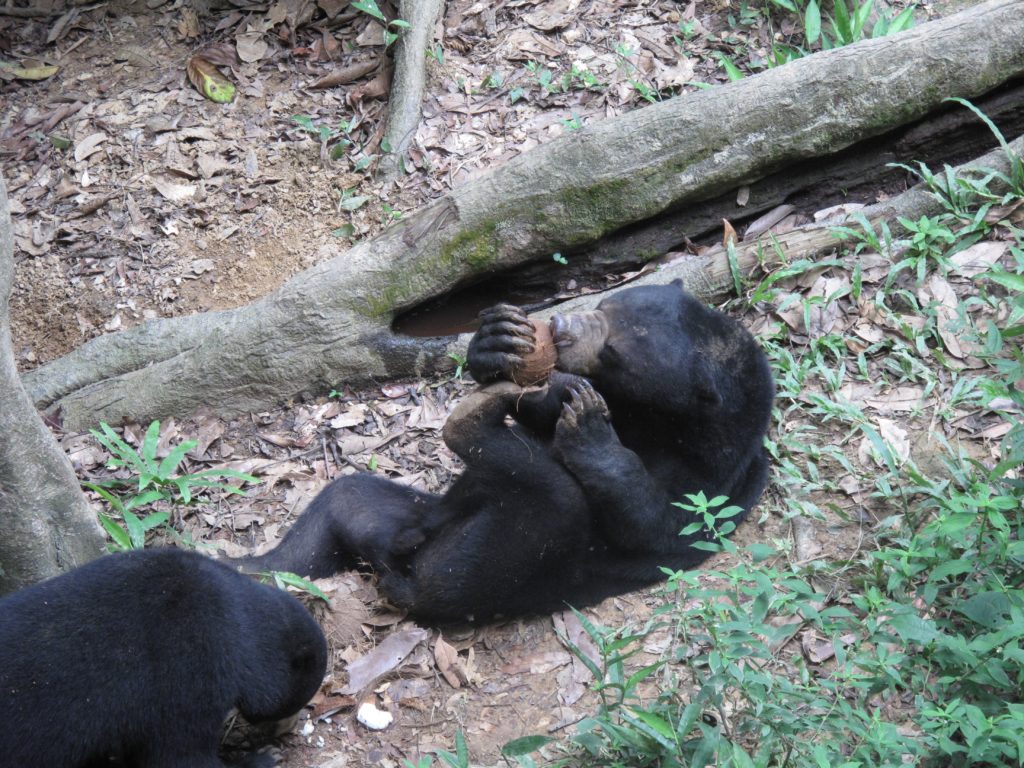
After the sanctuaries, we hopped in the van for a bumpy ride and soon found ourselves on a motorboat heading up the Kinabatangan River (the second-longest in all of Malaysia) for a 3D/2N stay with Uncle Tan’s Wildlife Adventures. Uncle Tan was Tan Su Lim who started the camp and was long an advocate of protecting the Bornean jungle.

We passed countless troops of mischievous long-tailed macaques,
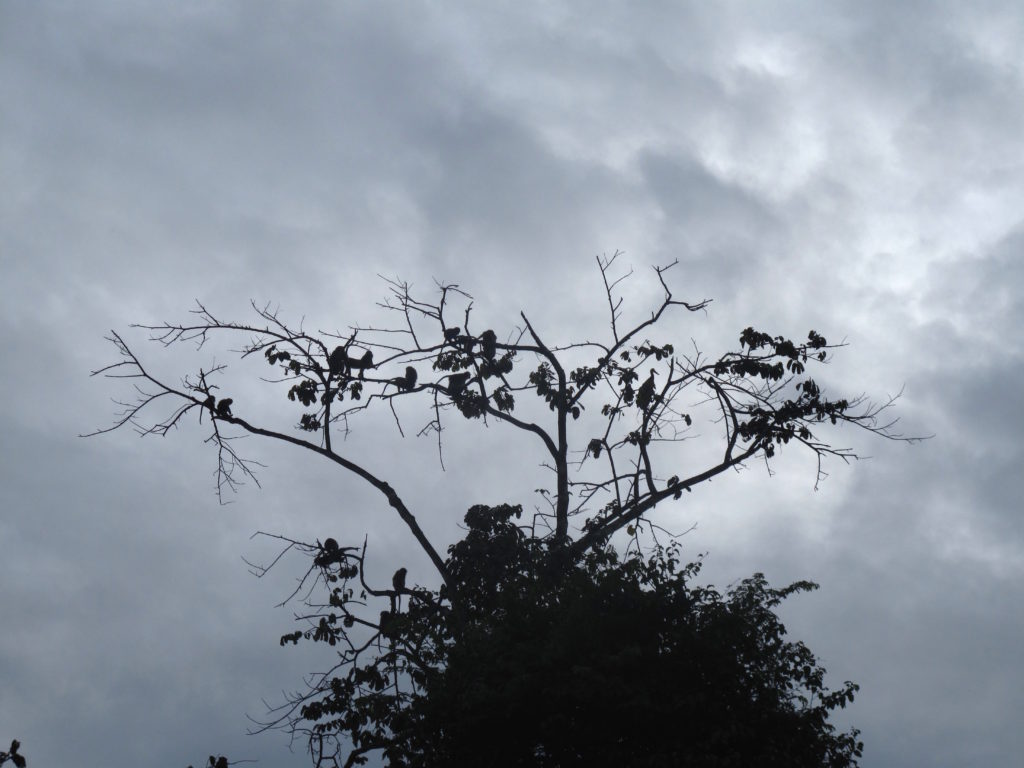
several species of hornbills,
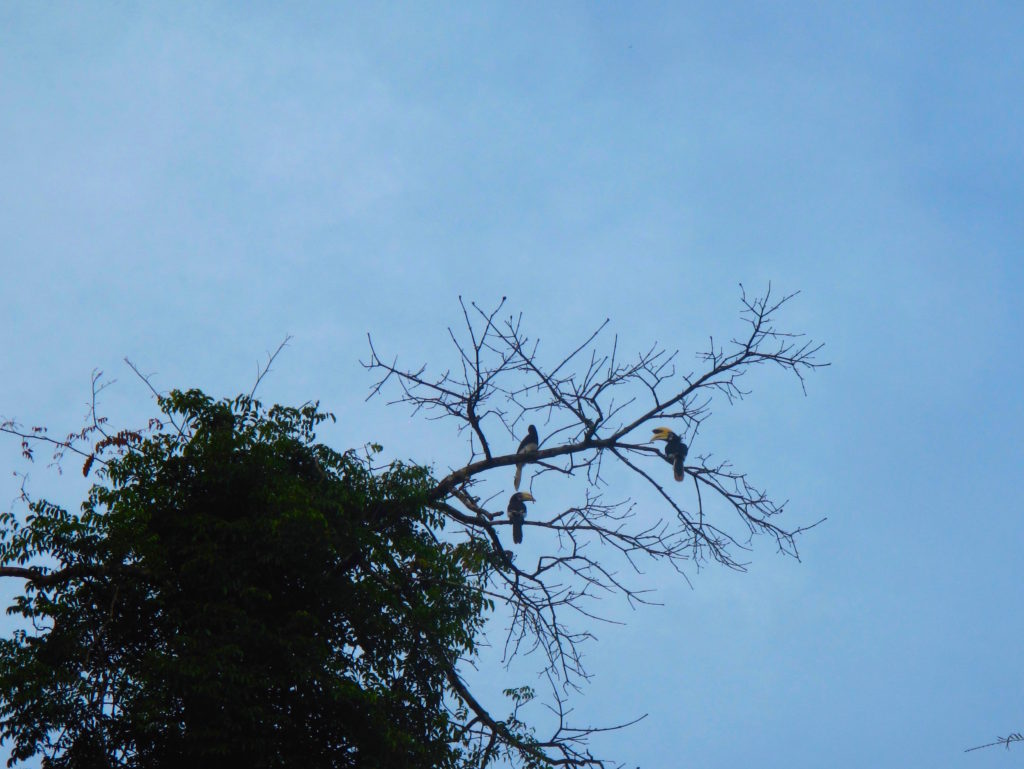
and other wildlife on our way to our rustic accommodations. Luckily (after a word with our guide), we didn’t end up in the same cabin as the sick women from the night before, and had the whole luxurious cabin to ourselves!

Like much of Malaysian Borneo, all of the camp’s buildings were built on stilts and connected with elevated walkways. We had to be careful at night because a few of the walkways led to abrupt dead ends….
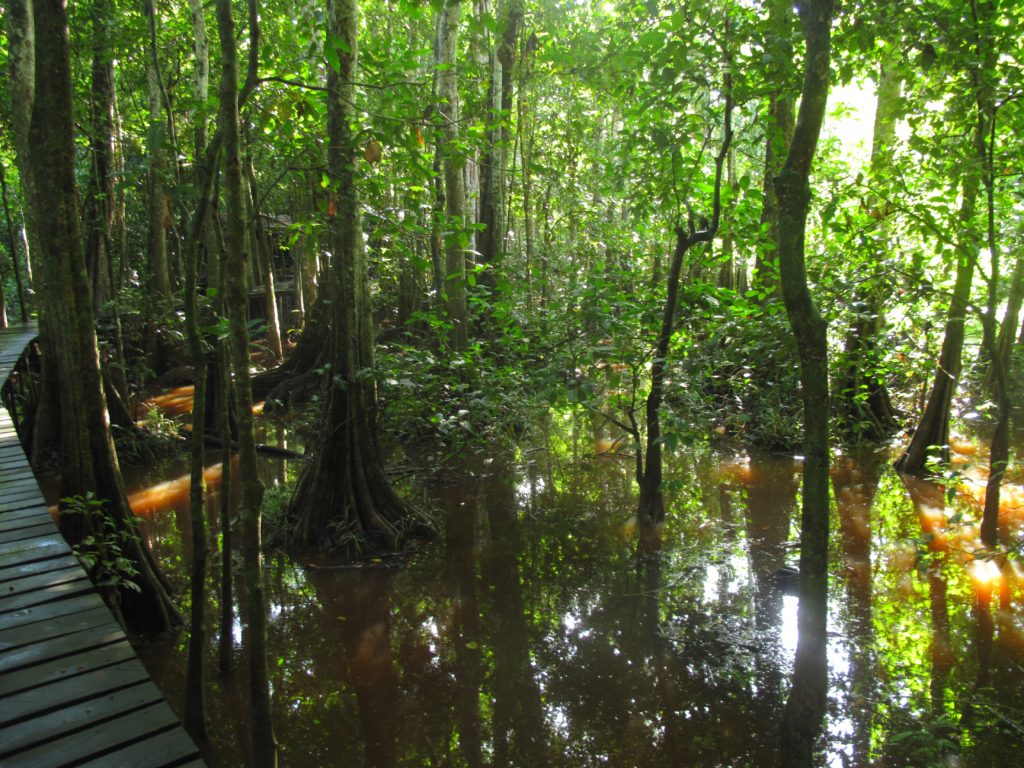
Our itinerary consisted of four jungle boat rides and two hikes, with the first excursion leaving at 6am every morning and the last returning around 9pm. To compensate for all this effort sitting in boats, we were fed four or five meals a day, buffets of up to twenty different vegetable and meat dishes shared between the twenty-or-so tourists and staff.
On the hikes, we saw all kinds of trees, frogs, and creepy crawlies like this millipede,
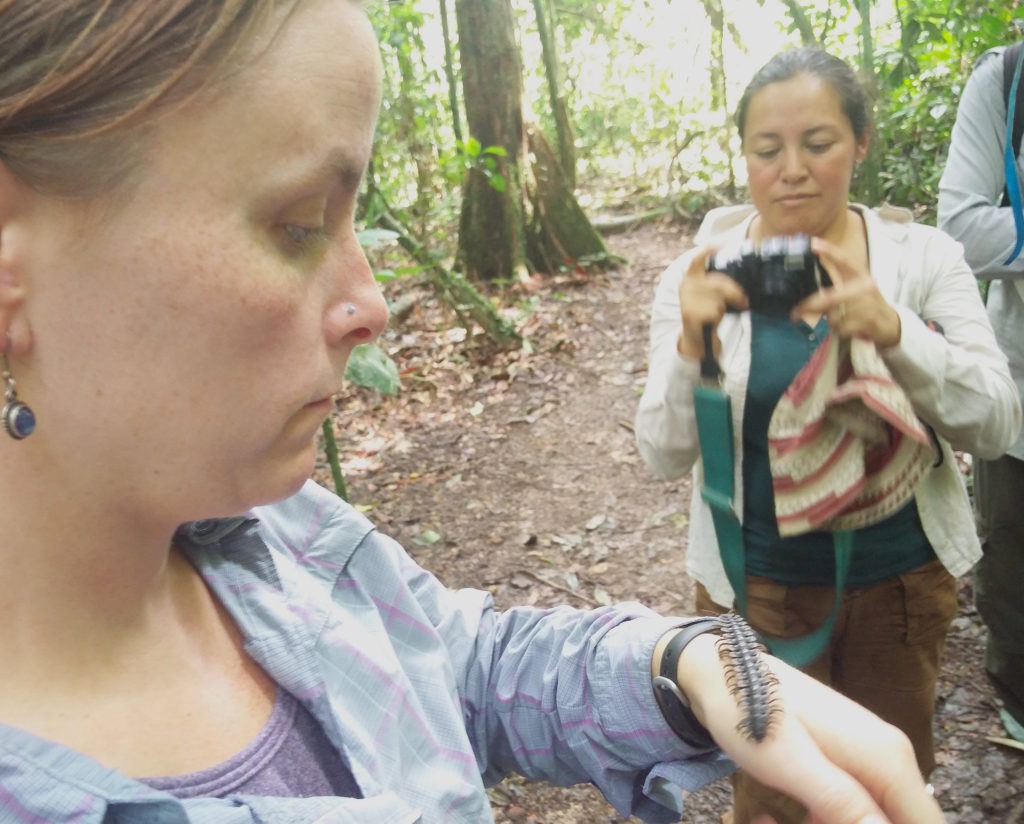
poisonous centipedes, and some crazy spiders like this fishing spider which uses its legs as bait to attract small fish. Once the fish falls for the decoy, the spider dives in the water and drags its prey to land.
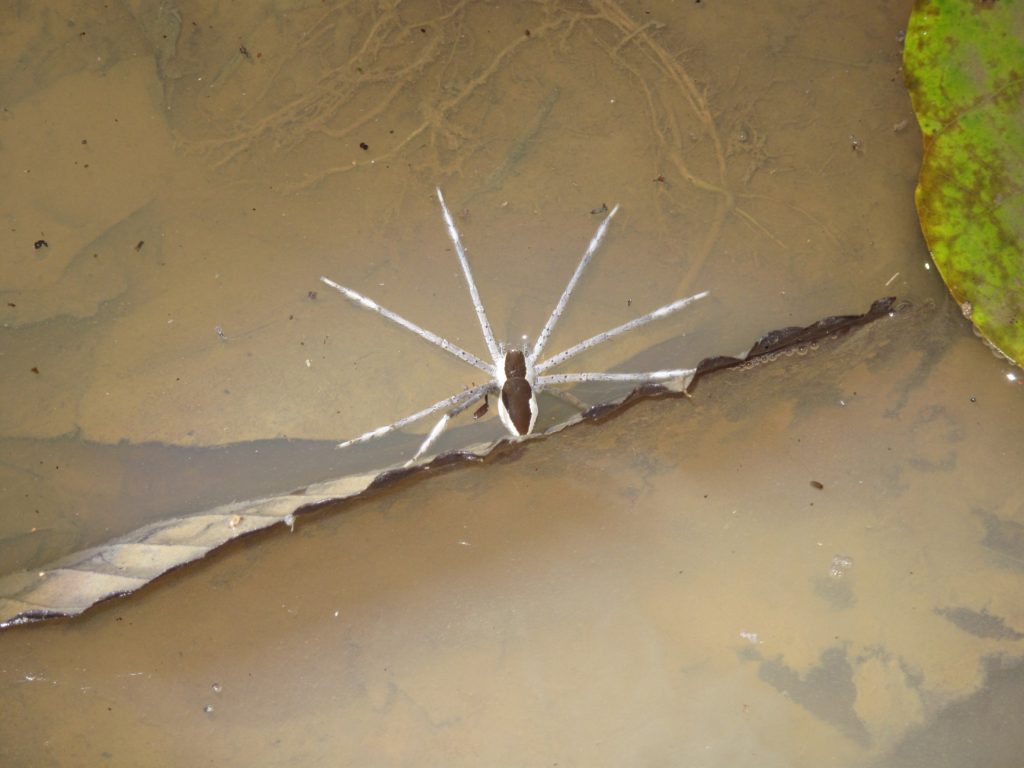
On the night hike, we learned a clever technique to find the jungle nightlife: if you hold a flashlight at nose-level, you can use it to see reflections from eyes of animals in the torch’s beam. We didn’t discover anything big, but were pretty astonished to find that reflections seen clearly from 50 feet away could end up being the eyes of a tiny spider.
The boat rides were much more fruitful for viewing jungle wildlife. Here’s a map of our itinerary on a tributary of the Kinabatangan.

The primary goal was to find an orang utan in the wild, which we finally accomplished on the last night, when we saw this fine specimen through binoculars.

While our picture doesn’t do the species justice, orang utans are huge charismatic animals, fascinating to observe. They are incredibly meticulous and we enjoyed watching the orang utan pictured above carefully collect and resize branches to build his nest for the evening (orang utans sleep in trees and build a new nest every night).
They are also tremendously curious and seemingly very thoughtful. William Temple Hornaday, an American zoologist, described one orang utan: “His eyes were large, bright, and full of intelligence, and he had a forehead like a philosopher. Because of his bald and shiny head, his solemn, wrinkled and melancholy visage, his air of profound gravity and senatorial wisdom, we got to calling him Old Man.” (Photo courtesy ArkinSpace.)

We saw many more creatures (such as gibbons, crocodiles, and storm storks), but we’ll spare you a full accounting and just show this list made by the staff.
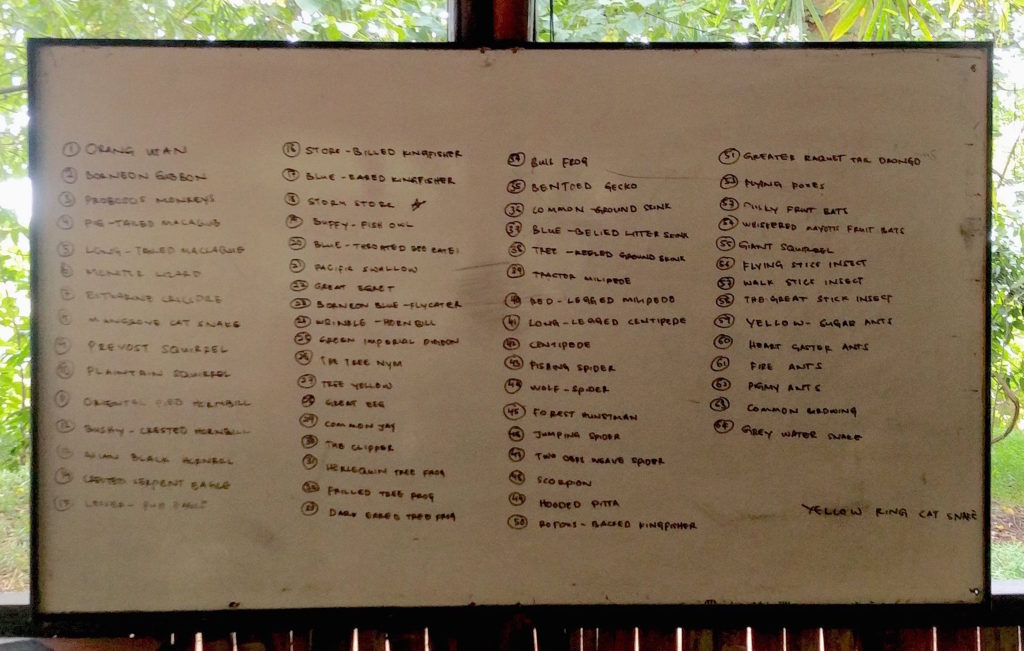
On the last night, there was a small party instigated by our head tour guide Lan, who was somehow still thoroughly enthusiastic about his job after more than 15 years at Uncle Tan’s. (And who introduced himself by saying, “I’m Lan, think ‘local area network’.”) The homemade rice wine flowed freely, and we enjoyed hearing stories about growing up in Borneo, learning some Malaysian folk songs, and singing Bob Marley songs with the whole crew.
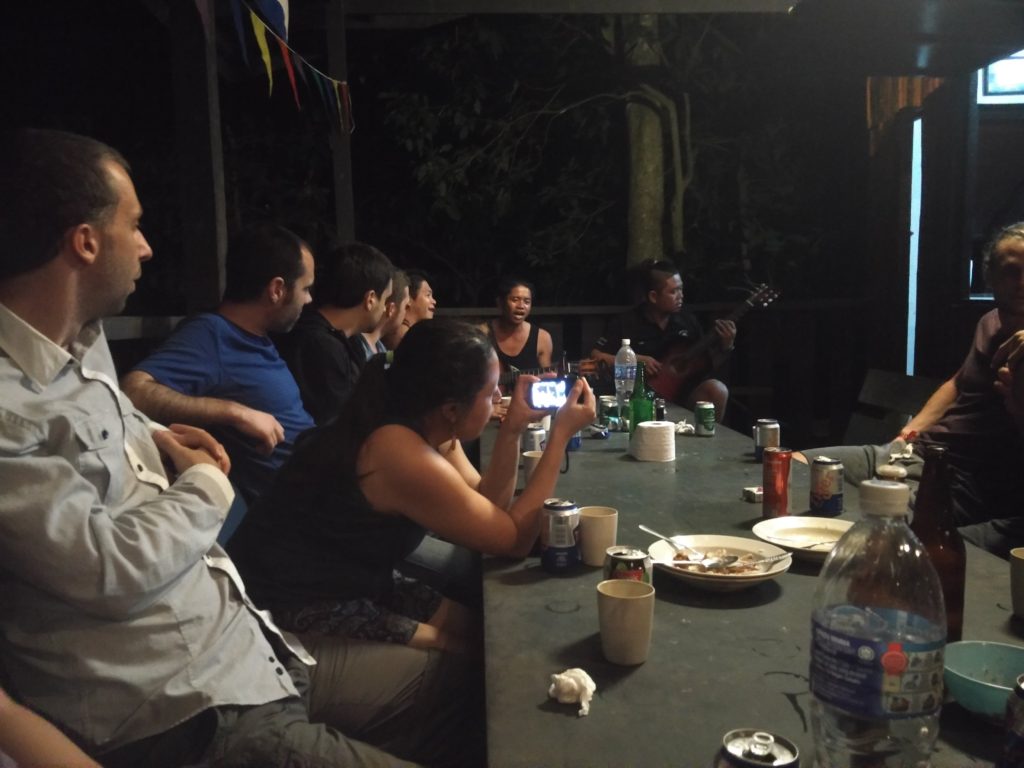
Once Lan heard about our addiction to spicy food, he had the cook make us a delicious extra-spicy salsa with home-grown peppers – one of the best salsas we had on the trip!
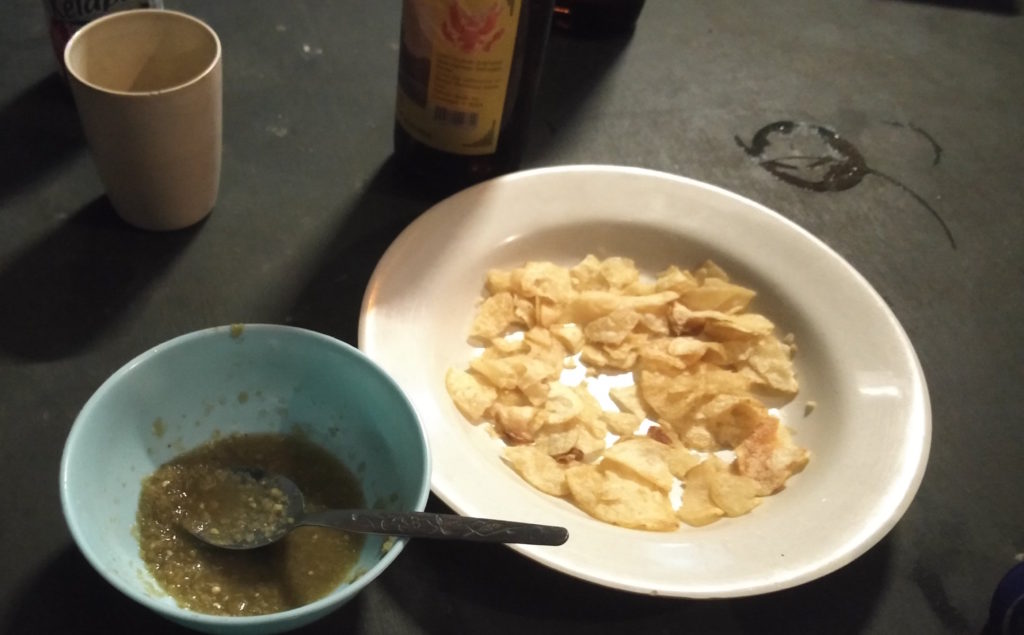
As the night was winding down, some rather frantic new arrivals came running over with a story about some unexpected wildlife.
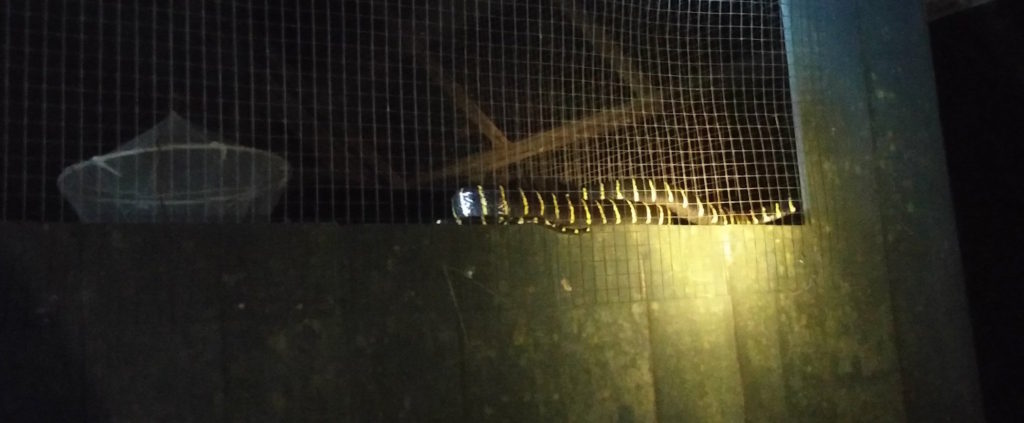
Apparently, a rather large venomous snake, the mangrove cat snake, had colonized the inside of their cabin. We think they were relocated to another cabin, although we never saw them again …
The next morning we were gifted a bonus cruise with one last look at the wild orang utan we found the day before. We enjoyed a peaceful hour or so watching him languidly swing around the tree and eat his breakfast and hoping that the outlook for orang utans will get better. But since palm oil’s high melting point makes it a very useful cooking product and since it is relatively cheap to produce, it is pervasive in the food we eat in the US and elsewhere (more than 50% of the packaged products on supermarket shelves contain palm oil).
If you are interested in helping out the with the plight of the red apes, you can (1) look for products with the RSPO or Green Palm labels, (2) write to big companies like Pepsi that are resistant changing to sustainable palm oil production practices, and (3) donate to companies that are trying to purchase and preserve the forests that orang utans call home.

Before heading back to civilization, Sarah collected some river water for a nonprofit called Adventurers and Scientists for Conservation. They run several different projects in which people traveling around the world can collect samples and data that are ultimately used to help with conservation initiatives. The samples we took will be analyzed for their microplastics project, which aims to assess the amount and distribution of microplastics (plastic particles <5mm) in the world’s water in effort to reduce health risks to humans and wildlife.
After a long, very sweaty minivan-ride (the woman in front of us kept closing the window since it was blowing off her hijab), we found ourselves wandering around Semporna, a small coastal town in the southeast of Malaysian Borneo (the southern two-thirds of the island is Indonesian).
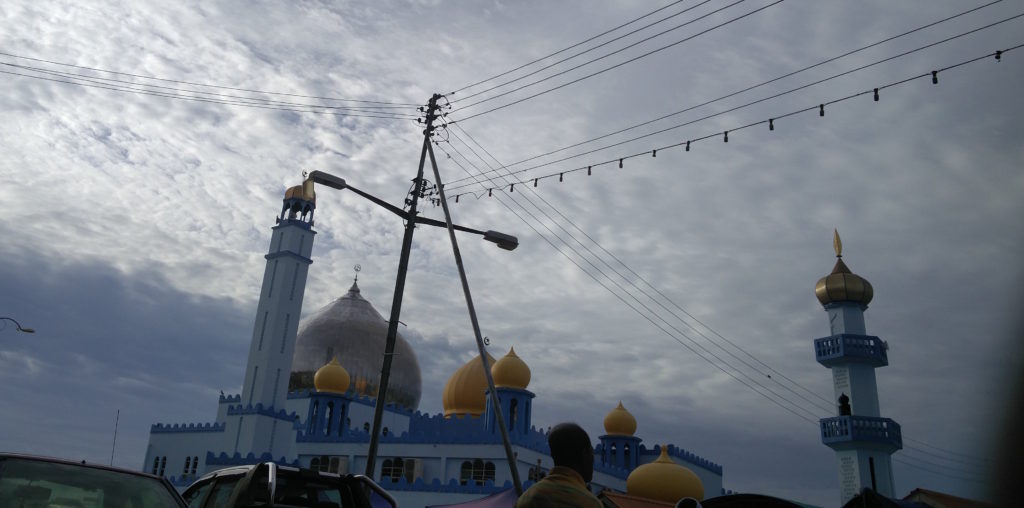
The area is renowned for its scuba-diving, and after a near-miss in Ko Tao we had decided to finally give the sport a go. We enrolled in the 3-day PADI open water course with an outfit called Big John’s. Sarah was quite nervous, but looking forward to learning.
We arrived on the rough-and-tumble Mabul Island, expecting that our first day would be spent in the classroom, with maybe some shallow water exercises.

Instead, our instructor gave us a 30-minute rundown on the equipment, and a few minutes later we found ourselves 10 meters underwater watching him try to explain underwater mask removal and replacement exercises using only hand gestures.
Sarah became even more nervous when she realized she’d have to take her mask off at depth with very little instruction and no shallow water practice. She got the mask off fine, but when trying to replace it, she inhaled some water. After trying–and failing–to clear the water from her regulator, she panicked and made a beeline for the surface (a huge no-no in scuba, which the instructor had not explained yet — although also not really dangerous at this depth). Afterwards, Sarah made it clear that she was not happy with the teaching style and she and the instructor (a self-proclaimed ‘prick’) hashed it out until they came to an agreement about how the next day would go.
After a long first day, we appreciated the views,
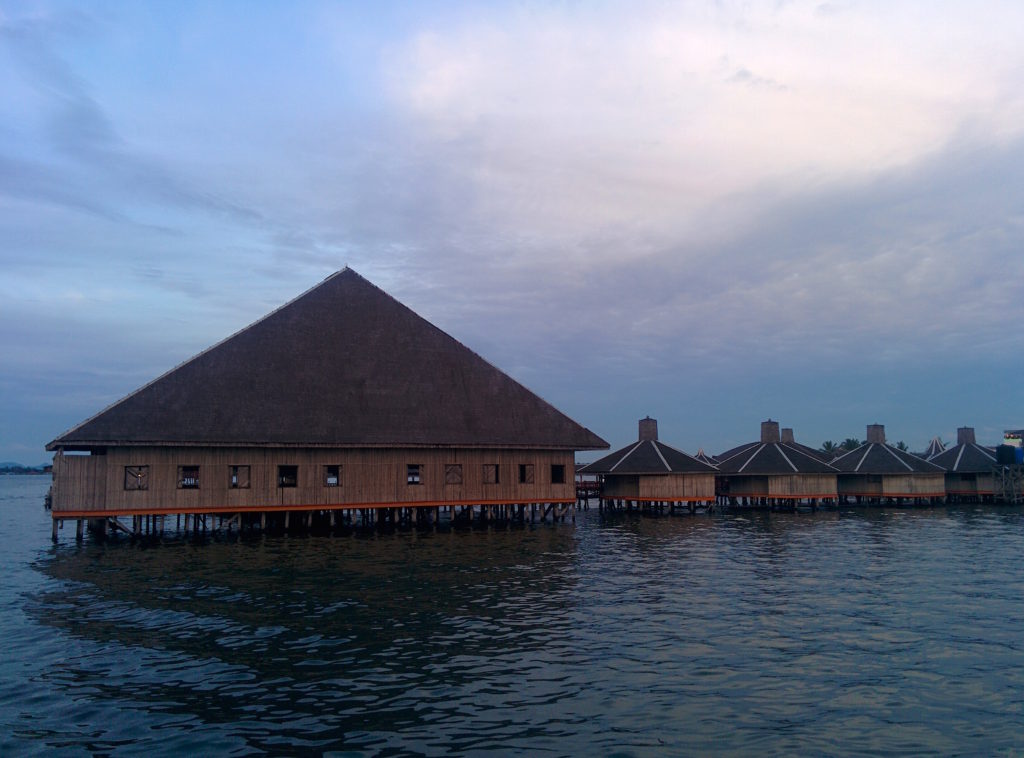
walked around the neighborhood (despite the fact that Borneo is heavily vegetated, most residents fill their front doorways with a bounty of potted plants)

and gorged ourselves on the plentiful and delicious food. While the sea gypsies brought around crabs and other fresh seafood, we were more than content with what Big John had to offer.
The next day, Sarah was so nervous about the underwater mask removal and air supply shutoff exercises, she almost didn’t continue the course. But after some above-water practicing, she decided to give it a go.

It was a success, and we both passed the skill tests with flying colors. Unfortunately, Sarah’s ears were clogged and caused too much pain after going much deeper than 8 meters. So she couldn’t make it out the last day which involved more fun diving, including some time in a shipwreck and close-ups with sea-horses and -turtles. But she did get to do some snorkeling–swimming with stingrays and gawking at strange corals. And we both received a PADI certification and are looking forward to our next dive!
After the requisite decompression time, we caught a flight back to Kota Kinabalu where we spent one more night exploring a more interesting area of the city, Gaya Street:

before catching a long flight westwards back to Lisbon.
Pingback: 531360 Minutes, a Summary – babble.fish